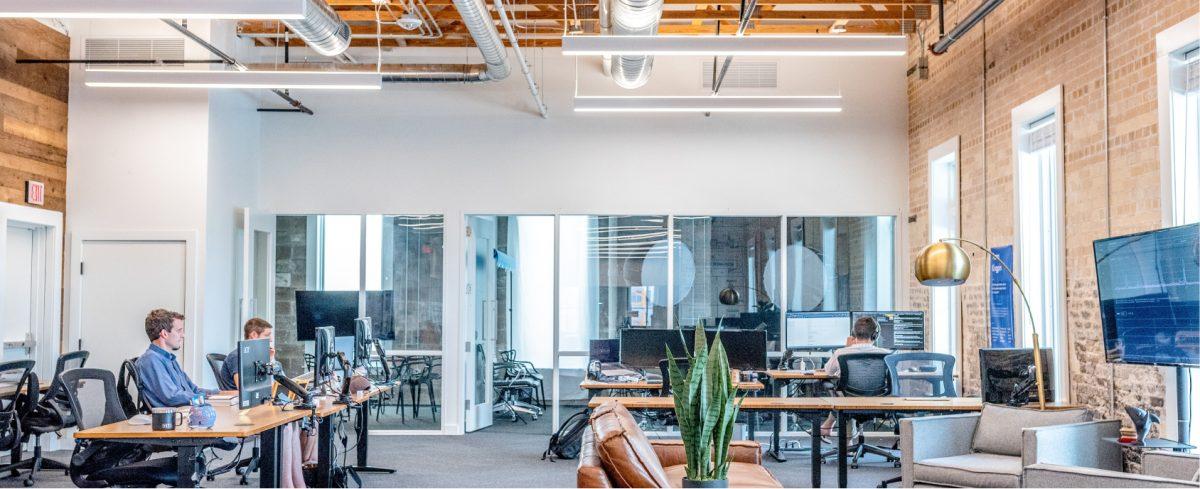Two years ago, COVID prompted governments worldwide to do the unthinkable – completely lock down their nations. The global population had to stay at home, and remote working became the norm as companies adapted to the situation to sustain themselves.
Now that offices are slowly resuming, the expectations around the office environment have changed. Two years of WFH situation has made comfort, hygiene, social distancing, and cleanliness priorities for officegoers. People are accustomed to having regular snack breaks and getting access to healthy, hygienic facilities while working now. Further, the importance of mental and physical wellbeing while working has also increased.
The pressing issue for many workplaces is to develop a plan according to the changing dynamics and make it more convenient for people working there. A comprehensive software solution can conveniently handle this, providing all the workplace insights on a real-time basis and prompting actions by the facilities team wherever necessary.
Understanding employee needs in a workplace
The Covid impact on the commercial real estate sector has been massive. Many leases have expired due to a work-from-home structure, and quite a few offices are opting for a more flexible arrangement. Subsequently, the unplanned occupancies and uncertainty in lease duration act as Achille’s heel for many operators in the segment.
Further, the employees are now looking for facilities such as relaxation spaces, outdoor areas, provisions for healthy eating, social spacing, fitness center, and more such “non-work” facilities in their office.
Introducing and managing such expectations requires CRE owners to keep a real-time view of their resources before strategizing the next steps. Moreover, the information must be available at the fingertips for the owners to plan their floor plan optimization and cost management efficiently.
This is where an automated dashboard might help you have all the relevant information to assist you in making a data-driven decision. It can help you track lease details, real time tenant occupancy and vacancy numbers, tenants’ information, utility usage data, and more. Further, it can alert you in case of emergencies or irregularities for you to act on it. The dashboard makes the floor management in commercial real estate faster and more efficient.
Redefining office space management using automated business insights
Manual control of employee distribution on the office floor can become tedious and render the plan inefficient. Keeping track of the leasing duration of each tenant, its budget, the rental schedule, management of other third-party insurance, and more manually can result in confusion and error. Usually, the data is maintained on spreadsheets with several stakeholders, and the availability of actual status becomes obscured. This can cause mismanagement of the CRE and waste revenue due to faulty floor planning.
An automated business insights dashboard can help you improve on-floor tenant management. Since a dashboard allows you to visualize the entire floor occupation rate and workforce distribution on your screen, you can modify the sitting plan according to your needs. This gives you the flexibility to maximize your floor use without compromising safety requirements. Further, the space utilized by the inhabitants can be better consolidated.
Highly efficient space management also enhances the facility management system in the workplace. As you can spare more space, you can use it to put up enclosures for non-work items like Yoga room, entertainment room, or small activities section. Having such facilities will improve the workplace environment and help the employees relax or take a break from work.
A scattered or unplanned office floor can also increase unnecessary expenses. Here, detailed knowledge of real-time space utilization is valuable too. For instance, an office in the secluded corner might be empty, yet the lights, HVAC, and other devices might still be running, thereby adding unnecessary electrical bills. Having real-time insights through a dashboard can help you cut down these wastages effectively.
An automated dashboard displaying all the relevant information on a single screen helps you effectively monitor and control your floor plan. Further, it helps with modifications, if required, to include new features or tenants without disrupting other employees. These all eventually improve your CRE’s value and increase revenue generation.














